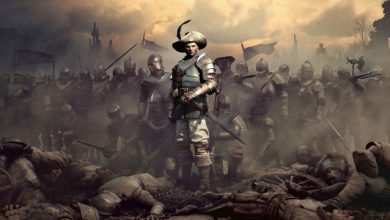Here’s an interesting little titbit – when Valve first got cracking on the sequel to the universally-acclaimed Portal, they seriously thought about doing away with portals completely and instead focus on a completely new mechanic within the same setting. One can’t blame them because topping the original masterpiece would have seemed near impossible. But they pushed on with portals, and Doug Lombardi wasn’t talking through his hat when he said that Portal 2 will be “the best game we [Valve] have ever done”. After spending over 13 hours in the Aperture Science Facility, it is quite evident that Portal 2 is Valve’s best game, and it may well be the best game of this generation.
[singlepic id=2613 w=450 float=center]
The story picks up immediately after the first game. Chell wakes up in what looks like a hotel room that is soon revealed to be a part of the Aperture Science Facility. After a few basic tests (that serve as a movement tutorial) Chell is put to sleep for an indefinite number of years, after which she is woken up by a spherical personality core named Wheatley. As life support fails around them, Chell and Wheatley begin their escape, first from the room, and then from Aperture Science. Things start going downhill when they accidentally awaken GlaDOS, the artificial intelligence that was in-charge of Aperture Science, who also happens to be the antagonist of the series. Unluckily for Chell, GlaDOS’ deranged obsession with science has only intensified over the years, fuelled further by the desire for vengeance against Chell for murdering her at the end of the first game. And so once again, in the name of science, testing begins.
In the interest of newcomers, Portal 2 has a smooth learning curve that eases the player into the core mechanics through a series of gentle brain-teasers. The player is equipped with the portal gun that can shoot two interconnected portals in the ceiling, walls or the floor of the environment. The player can go through one portal and come out of the other, preserving momentum in the process. The game gives new players ample time to familiarize themselves with how portals work before stepping up the challenge by introducing new techniques and mechanics. Slowly, the player will come across the new inclusions that add immensely to both the scale and scope of the puzzles. While you won’t be breaking your televisions or hurling your controller due to the difficulty in Portal 2, you won’t be breezing through the game either.
[singlepic id=2611 w=450 float=center]
Valve has once again shown its prowess at level design, which encourages lateral thinking without making things overly obtuse. Alongside hard light bridges and excursion funnel tractor beams, which have received a fair bit of coverage during the game’s promotion, the biggest new addition is gels. The mechanic comes from another Independent Games Festival winner known as Tag: The Power of Paint. Gels are essentially fluids that alter the properties of surfaces. For example, the repulsion gels bounces any object (player or otherwise) that falls onto it and the propulsion gel removes friction, allowing the player to move at incredible speed on top of it. The introduction of all the new mechanics not only feels like an outward expansion of the core concept, but also allows the developer to keep things fresh.
But these alone don’t justify the bold claims in the beginning of this review. Indeed, what hurls Portal to its legendary status is something else entirely. For one, Portal 2 is quite simply the best written game I have ever played, and can give some of the best written movies of our time a run for their money. Its ability to combine humour with completely contrasting circumstances so deftly is nothing short of outstanding. You’re alone in a facility run by an unhinged AI, where death awaits at every turn, and yet you will laugh right through it. GlaDOS is brilliant as ever, and understandably, even more bitter after the circumstances of the first game. While she may come across as more caustic than sarcastic in the initial portion of the game, she goes through a fair bit of character development through the game’s unexpected twists and turns. But it’s the new cast of characters that often steals the show. Wheatley, with his impeccable British accent and dim wit is such a riot that the verbal sparring between GlaDOS and him will often have you in splits. Every character, be it the central ones or the minor ones, such as other personality cores and talking turrets, play their part to perfection, and hold the ability to genuinely make you laugh.
[singlepic id=2610 w=450 float=center]
Visually, Portal 2 may not be a graphical powerhouse like Crysis and Uncharted, but it doesn’t need to be. The visuals of Portal 2 are driven by its art, which is nothing short of exquisite. By going deeper into Aperture Science and allowing it to fall to ruin between Portal and Portal 2, the artists got the necessary bandwidth to flex their muscles, and they’ve utilized the opportunity to full effect. In fact, unlike Portal, Aperture Science takes the centre stage in Chell’s bid to escape. The derelict facility comes to life with GlaDOS and immediately begins to restore itself to its former state. Panels shift, debris clears, and giant rooms move into position right in front of the player’s eyes. Later in the game, you will travel to the ruins of the oldest segments of the facility, and learn about its past and its twisted journey through time. You move deeper into Aperture Science as you move deeper into the game, and by the time you reach the game’s mind-blowing finale, you won’t want it to end. The soundtrack also plays its part perfectly to that end, staying low key for most of the time and kicking in to compliment specific moments within the game perfectly.
The single player campaign clocks in between 7-9 hours depending on how quickly you can solve puzzles. After that, you can jump right back in with a friend in GlaDOS’ “Co-operative testing initiative”. In the co-op campaign, which chronologically takes place after the single player campaign, the players take control of P-Body and Atlas, the duo of a repurposed turret and a personality core, each wielding a portal gun. With double the portals and brains, the puzzles in the co-op campaign understandably step up in difficulty. The campaign requires a lot of co-ordination between players, and for players lacking the option of voice communication (or playing with a friend whom they are not on talking terms with), the game has a whole list of context-based icons for communication. That said, I would highly recommend playing with voice support as some the later puzzles can get very convoluted and may require a higher degree of precision and co-ordination.
[singlepic id=2614 w=450 float=center]
It is also worth noting that the PS3 version of the game comes with full Steam integration and the inclusion of a free copy of the game on PC/Mac. The steam integration includes some pretty nifty features like cloud saves and cross-platform play, which we would love to see implemented in more games in the future.
Conclusion
Portal 2 is not perfect by any stretch of imagination. The pacing misses a step once in a while, the loading times are long, and it lacks replay value. The original Portal was probably better off in all those respects, and maybe even closer to perfect. But Portal 2 does better than just perfect. It makes you fall in love with the turrets, the lasers, and the test chambers; with the bottomless pits and the swivelling cameras; with the abandoned offices, the disembodied voices and the whirring wall panels; with loneliness; with Aperture Science. They all grow on you in your bid for freedom. But freedom is the last thing you’ll want when the time comes for the credits to roll. All you will want to do is more testing. For science. You monster.




